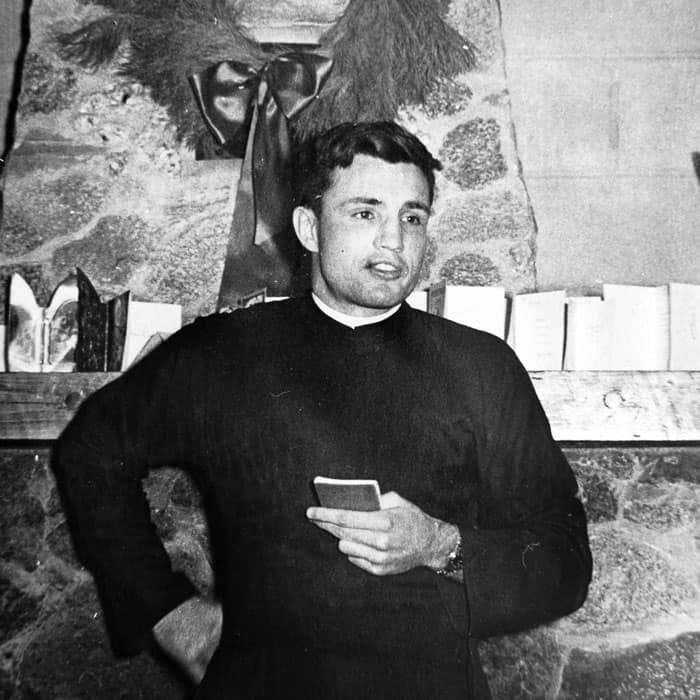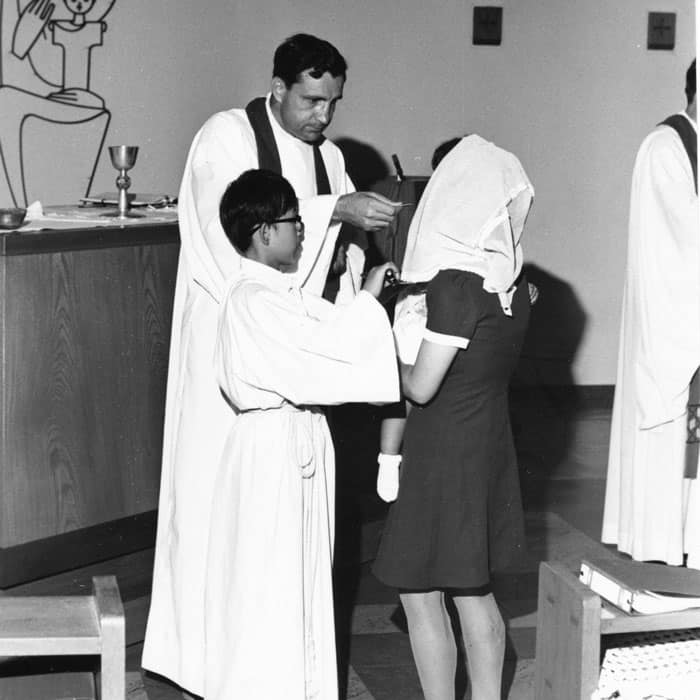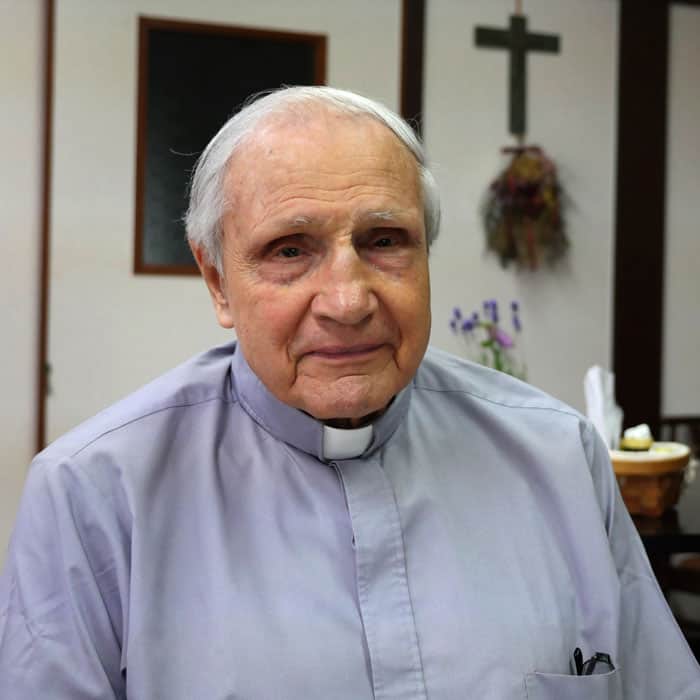Maryknoll Father James Jackson observes the sunset of his missionary life in Japan.
From the terrace of the Maryknoll Society house adjacent to the chapel, Maryknoll Father James Jackson observes the serenity of the lake community, where he has provided pastoral service to local Catholic communities for more than 60 years.
“It is difficult to say goodbye to the community,” says Father Jackson nostalgically, thinking, perhaps, of his imminent return to the United States. At the twilight of his missionary life, he has been assigned to the Maryknoll retirement house in Los Altos, California.
Today he reflects on his life in Japan. “The people have been very supportive, taking me here and there,” he says, especially, he adds, since he was told that he couldn’t drive anymore. “I’m very grateful not only for their assistance but for their concern. I have arthritis, my feet, I can’t walk, and people are very concerned.”
“There’s a shrine next to us with a famous pine tree that had been there for centuries. It died a few years ago,” continues Father Jackson, describing the Maryknoll center house’s surroundings. “This place has a history. People used to come here for the [Shinto] fiesta. Maryknoll bought this building, renovated it, and during the war, it was taken over by a school that was originally for children of the military.”

In this photo circa 1953, young Jim Jackson stands in front of the fireplace at the Maryknoll novitiate in Bedford, Massachusetts, where he was a student preparing for missionary priesthood. (Courtesy of James Jackson/U.S.)
Regarding his own journey, the missioner from Westfield, New Jersey, says, “I became a priest when I was 29. I was influenced by the assistant priest of the parish in Westfield. I read some material on Maryknoll, which made me interested in going to the missions.”
He was ordained in 1958. “I was mainly thinking of China, but I was sent to Japan, right here in August 1958,” he says. “I studied the language for two years and was assigned to parish work ever since, mainly here in Shiga and Mie Prefectures. I have been in parochial work all my life and I never thought that I would do something else. I am very happy with it.”

Father Jackson continues telling stories eagerly. One year, during his vacation time, he went to visit his aunt in a retirement community in New Jersey and celebrated Mass for the residents. He noticed that only one man, who was Jewish, did not attend. Later, the man approached Father Jackson to ask where in Japan he served as a missioner.
“In a place called Tsu,” said Father Jackson.
“Is that spelled T-S-U?” asked the man.
“Yes, have you been there?” Father Jackson asked.
“Yes, I bombed it,” the man replied.
After a brief conversation, Father Jackson learned that the man did not actually drop a bomb on Tsu, but was a radio operator with the Allied forces. They dropped bombs on Tsu even though it was not a military target. The man had regrets about his involvement. Hoping to promote the man’s healing, Father Jackson later tried to communicate with him to ask if he would like to visit the people of Tsu, but unfortunately the man had died.

“The parish is the center of mission activity, because the Spirit is at work in the community,” says Father Jackson. “Teaching catechism is very important, doing social work is important, but building up community is the most important part of missionary work. The community manifests the Holy Spirit. The community, the Body of Christ, is the continuation of Jesus Christ. He became flesh, human, in order to show us the face of the Father and now it is the community that carries that out.”
In the warmth of this day in June, Father Jackson leaves the Maryknoll center house and slowly walks to the small chapel overlooking Lake Biwa. He puts on an alb and stole, lights a candle and celebrates a most intimate Mass.
Featured image: In this picture taken around 1980, Father James Jackson sits on the stoop of the nursery school in Hisai, Mie Prefecture. Hisai was a mission station of the Tsu Catholic Church, where he was serving. The catechist on the left is Yasuyo Udaka, and her assistant on the right is Mihoko Doi. (Courtesy of James Jackson/Japan)
![]()

